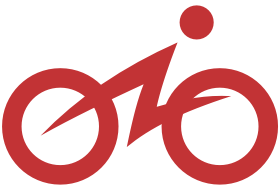E-Bikes is a sample application that demonstrates how to build applications with Lightning Web Components and integrate with Salesforce Communities. E-Bikes is a fictitious electric bicycle manufacturer. The application helps E-Bikes manage their products and reseller orders using a rich user experience.
 Learn more about this app by completing the Quick Start: Explore the E-Bikes Sample App Trailhead project.
Learn more about this app by completing the Quick Start: Explore the E-Bikes Sample App Trailhead project.
This sample application is designed to run on Salesforce Platform. If you want to experience Lightning Web Components on any platform, please visit https://lwc.dev, and try out our Lightning Web Components sample application LWC Recipes OSS.
-
Set up your environment. Follow the steps in the Quick Start: Lightning Web Components Trailhead project. The steps include:
- Enable Dev Hub in your Trailhead Playground
- Install Salesforce CLI
- Install Visual Studio Code
- Install the Visual Studio Code Salesforce extensions, including the Lightning Web Components extension
-
If you haven't already done so, authorize your hub org and provide it with an alias (myhuborg in the command below):
sfdx force:auth:web:login -d -a myhuborg -
Clone the repository:
git clone https://github.com/trailheadapps/ebikes-lwc cd ebikes-lwc -
Create a scratch org and provide it with an alias (ebikes in the command below):
sfdx force:org:create -s -f config/project-scratch-def.json -a ebikes -
Push the app to your scratch org:
sfdx force:source:push -
Assign the ebikes permission set to the default user:
sfdx force:user:permset:assign -n ebikes -
Import sample data:
sfdx force:data:tree:import -p ./data/sample-data-plan.json -
Deploy Community metadata:
sfdx force:mdapi:deploy -d mdapiDeploy/unpackaged -w 5 -
Publish the Community:
sfdx force:community:publish -n E-Bikes -
Open the scratch org:
sfdx force:org:open -
In Setup, under Themes and Branding, activate the Lightning Lite theme.
-
In App Launcher, select the E-Bikes app.
Follow this set of instructions if you want to deploy the app to a more permanent environment than a Scratch org. This includes non source-tracked orgs such as a free Developer Edition Org or a Trailhead Playground.
Make sure to start from a brand-new environment to avoid conflicts with previous work you may have done.
-
Clone this repository:
git clone https://github.com/trailheadapps/ebikes-lwc cd ebikes-lwc -
Authorize your Trailhead Playground or Developer org and provide it with an alias (mydevorg in the command below):
sfdx force:auth:web:login -s -a mydevorg -
If you are setting up a Developer Edition: go to Setup, under My Domain, register a My Domain.
-
Enable Communities with the following steps:
- In your org, in Setup, select Communities Settings.
- Click the Enable communities checkbox
- Enter a domain name for your community. Remember this value as you’ll use it later in this step.
- Make sure that your domain name is available by clicking Check Availability.
- Click Save then Ok.
- Navigate back to Communities Settings in Setup.
- Under Community Management Settings, enable Enable ExperienceBundle Metadata API.
-
Configure the Community metadata file with the following steps:
- Edit the
force-app/main/default/sites/E_Bikes.site-meta.xmlfile. - Replace the value between the
<siteAdmin>tags with your Playground username. - Replace the value between the
<siteGuestRecordDefaultOwner>tags with your Playground username. - Replace the value between the
<subdomain>tags with your Communities domain. - Save the file.
- Edit the
-
Remove the
Productcustom field from theCaseobject with the following steps:- In Setup, click the Object Manager tab.
- Click on the Case object.
- Click Fields & Relationships.
- Locate the Product picklist field and click Delete from the row menu.
- Confirm deletion by clicking Delete.
-
Deploy the App with these steps:
-
Run this command in a terminal to deploy the app.
sfdx force:source:deploy -p force-app -
Assign the
ebikespermission set to the default user.sfdx force:user:permset:assign -n ebikes -
Import some sample data.
sfdx force:data:tree:import -p ./data/sample-data-plan.json -
Deploy the Community metadata.
sfdx force:mdapi:deploy -d mdapiDeploy/unpackaged -w 5 -
Publish the Community.
sfdx force:community:publish -n E-Bikes -
If your org isn't already open, open it now:
sfdx force:org:open -u mydevorg -
In Setup, under Themes and Branding, activate the Lightning Lite theme.
-
In App Launcher, select the E-Bikes app.
-
This repository contains several files that are relevant if you want to integrate modern web development tooling to your Salesforce development processes, or to your continuous integration/continuous deployment processes.
Prettier is a code formatter used to ensure consistent formatting across your code base. To use Prettier with Visual Studio Code, install this extension from the Visual Studio Code Marketplace. The .prettierignore and .prettierrc files are provided as part of this repository to control the behavior of the Prettier formatter.
ESLint is a popular JavaScript linting tool used to identify stylistic errors and erroneous constructs. To use ESLint with Visual Studio Code, install this extension from the Visual Studio Code Marketplace. The .eslintignore file is provided as part of this repository to exclude specific files from the linting process in the context of Lightning Web Components development.
This repository also comes with a package.json file that makes it easy to set up a pre-commit hook that enforces code formatting and linting by running Prettier and ESLint every time you git commit changes.
To set up the formatting and linting pre-commit hook:
-
Install Node.js if you haven't already done so
-
Run
npm installin your project's root folder to install the ESLint and Prettier modules (Note: Mac users should verify that Xcode command line tools are installed before running this command.)
Prettier and ESLint will now run automatically every time you commit changes. The commit will fail if linting errors are detected. You can also run the formatting and linting from the command line using the following commands (check out package.json for the full list):
npm run lint:lwc
npm run prettier
